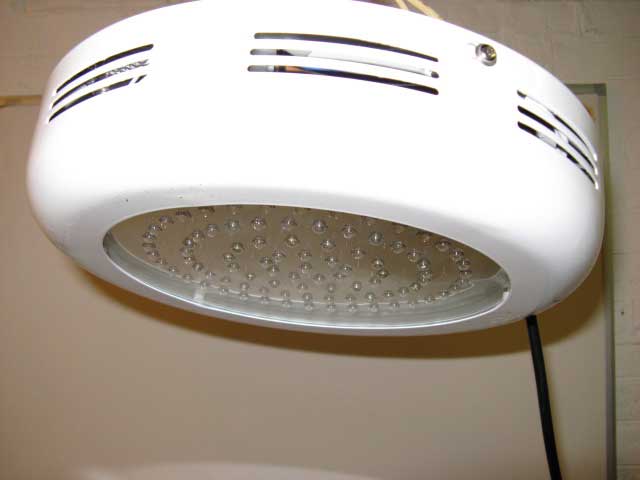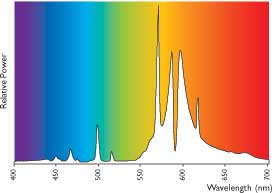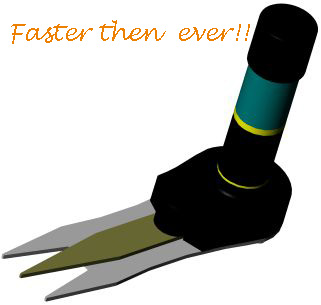| Subject: | The ideal growlight |
|
Measuring uMol How to measure the effectivity of a growlight? The only way that really works for me, is to let the plants do the measuring for me. Start a proper Set-up with quality seeds, a good tent, ventilation, soil, temperature and nutrients. Do your best to produce as much bud as possible, then repeat with another growlight you would like to evaluate. Please don't get me wrong, I am not saying measuring uMol, PPF, PPFD, YPFD is useless, just that their values should be considered to be more or less good indications. For instance; a growlight can have a very high uMol value and at the same time be only very good for the vegetative state, and not very suitable for the flowering stage. The emmitted light spectrum will in most cases be responsible for this effect. Despite the claims of growlight manufacturers, nobody really knows which spectrum will be the ideal one for a certain strain of plants, is adding UV helpfull? Do the phytochromes really need IR to transform the Pfr back into Pr? Both UV and IR leds have a rather small efficiency, and high costs, wouldn't it be better to use that some wattage for more 630 nM bulk ledpower? Another limitation is the spreading of light, a growlight can have great Par values straight under it, but at the same time be much less powerfull a little bit of axis. Measuring the total amount of light, either direct or reflected, that will actually reach the plants leaves, is what is most important. And that job can, imho, best be done by a...plant. Boldly taking plants where they haven't gone before At this moment growlights mostly imitate the sunlight, what would happen if we would manipulate the circumstance a bit more? In the near future I want to experiment with different timings in the plants life, for instance investigating what the effect of a longer flowering period, by ommitting the deepred part of the spectrum, will be. Will the buds keep getting bigger, way beyond the normal size? Do we really need day cycles of 24 hours? Our timers all seem to be based on that presumption, but what would happen if the day period was prolonged, like to a 14 hour Day, followed by a 12 hour Night period. Can the night period be limited, for instance by adding some extra deepred at the end of the day to help Pfr to return to Pr? What would shortening the Day and Night cycle, like 10-10 do? Many other valuable experiments can be conceived. In the new and booming field of Led growlights, there is still a lot of research reguired. For me this pioneering is what I like most in my job :-) |
| Subject: | Root development |
 Here you can see the huge influence of the different Led colors on plant development, including the roots. FL is fluorecent tube, R = Red, B = Blue and Fr is FarRed. This picture is about Chrysanteums, but I think the reponse of Marijuana will be similair. |
| Subject: | Evaluating thermal design of a Led panel |
| One of the most important qualities of Led panels is their thermal design, the junction temperature of the Leds determines the relative efficiency. The lower the temperature, the better it is. There is a very simple and effective way to determine if your Led panel is thermally ok; take a simple light meter and measure the amount of light at the first moment after switching the panel on. Now wait and see what happens while the panel heats up, you'll notice the amount of light drops quite a bit. About 10% drop in light output is unavoidable and ok. However, if the heateffects cause the light output to drop by 20% or more, it's time rethink the thermal circumstances. Maybe adding a tiny high efficient fan is a good idea, but make sure you check it's power consumption first. |
| Subject: | Popular LedMyths |
|
| Subject: | Led Facts |
|
| Subject: | Checking out the UFO |
Got the UFO today, I bought it at www.ledlightsorient.com, including shipping it cost me 180,- Euro, about 250 U$. It is a 90 watt LGL0505, it looks like a well developed
product, on the inside it is build reasonably rigid. The packaging is ok, and the email response from the supplier is very good.

Lets have a look at the claims that are made by the supplier: Benefits of our LED grow lights are as follow:
Conclusion: Considering the low price it is a reasonable product. But it is a shame that the huge claims and promises; "replaces a 400 Watt HPS"
are a pack of damn lies. Just as with most other Ledgrow products out there, make sure you can see the results they give before you buy them.
|
Usefull documents:
About HPS lights
About lightcolor for plants
Usefull links:
Lumileds, produce the Rebel and K2 I'm using in my Set-ups
Cree, Led manufacturer, produce the very nice XLamp
Edison, Led manufacturer, interesting Farred Leds
Osram, they produce the very nice Golden Dragon LED
Carclo, Lenses manufacturer
L2-Optics, Lenses manufacturor
Farnell, great supplier of LEDs and Lenses


